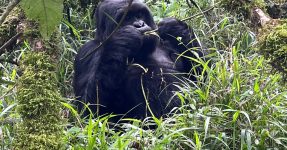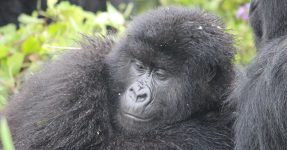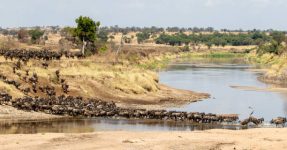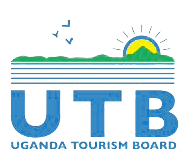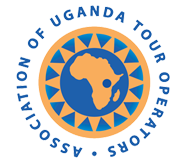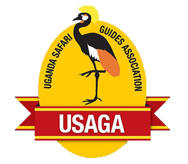Bwindi National Park Entry Fees: Bwindi Impenetrable National Park is located in southwestern Uganda in the Kanungu district at the edge of the Rift Valley. It is one of the largest protected areas of the mountain gorillas in Uganda. The first gorilla family in this park was the Mubare gorilla family which was open for tracking in 1993. Currently, in the park, there are over 19 gorilla families habituated for tracking by travelers on their safaris.
Travelers to see mountain gorillas in the park are supposed to have booked a gorilla trekking permit to ensure availability during the tracking time. In the Bwindi impenetrable national park, there are over 160 trekking permits available each for travelers to see the mountain gorillas. Park entry fees to this park are usually added to the activities that travelers are to where some of these activities include;
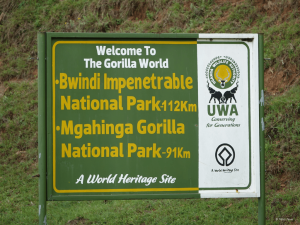
How much is the entrance fee to Bwindi Impenetrable National Park?
Park entry fees include 40 USD for foreign nonresidents, 30 dollars for foreign residents and the rest of Africa, and 30000 Ugandan shillings for the rest of Africa. Bwindi entrance fees are Gorilla trekking is one of the primary activities at this park where travelers during a Uganda safari can engage in the Bwindi impenetrable national park. Travelers planning a gorilla trekking safari are not supposed to pay for the entry fee since the cost of the gorilla trekking permit covers everything. A gorilla trekking permit costs about 800 USD for foreign nonresidents, 700 dollars for foreign residents, 500 dollars for the rest of Africa, and 300,000 Ugandan shillings for East African residents.
How much is a gorilla habituation permit in Bwindi Impenetrable National Park?
Gorilla habituation is another activity in the Bwindi Impenetrable National Park where travelers on their Uganda safaris engage. Also in this activity, travelers do not pay the entry fee since they are included in the gorilla habituation permit. Gorilla habituation is only done in Bwindi impenetrable National Park in the Rushaga sector.
A gorilla habituation permit costs 1500 dollars for foreign nonresidents, 1000 dollars for foreign residents, and 750000 Uganda shillings for East African residents. Usually, other activities like Nature walks, birdwatching, and other activities are supposed to pay separate park entry fees. Park entry fees include 40 USD for foreign nonresidents, 30 dollars for foreign residents and the rest of Africa, and 30000 Ugandan shillings for the rest of Africa.
Gorilla trekking sectors of Bwindi Impenetrable National Park
Bwindi Impenetrable National Park is made up of 4 sectors and these include;
Buhoma sector
The Buhoma sector is found in the northern part of the Bwindi impenetrable national park. It is usually more accessible for travelers coming from the Queen Elizabeth National Park. It is also near the Kihihi airstrip. In this sector, several habituated gorilla families are available for tracking by travelers. Some of these families include; Mubare, Habinyanja, Rushegura, Katwe, Muyambi, and many others.
Ruhija sector
The Ruhija sector is found in the eastern part of the park and it is more accessible by travelers from Kabale or Buhoma. It is also a great sector for tracking mountain gorillas where there are several habituated gorilla families and they include; Bitukura, Oruzogo, and Kyaguriro.
Rushaga sector
This is one of the most popular sectors that travelers usually visit for gorilla trekking which is located in the southern sector of the Bwindi impenetrable National Park. In this region, the gorilla trekking families include; Nshongi, Busingye, Kahungye, Bweza, and many others. In this sector, travelers can engage in the habituation process of the mountain gorillas.
Nkuringo sector
This sector is also located in the southern part of Bwindi. Impenetrable national park. The sector initially had one family which was called Nkuringo which was under the leadership of the Nkuringo. The gorilla families in Nkuringo include the Posho gorilla family, Christmas, Bushaho, Nkuringo, and many others.
How to book a gorilla trekking permit in Bwindi Impenetrable National Park?
Gorilla trekking permit is one of the key requirements for travelers to track mountain gorillas. Travelers are supposed to use licensed tour operators who purchase them directly from the Uganda Wildlife Authority. In the booking process, the tour operators are supposed to have a copy of the passport of the travelers, dates of tracking, and payment receipts of the gorilla trekking. Travelers are supposed to book in time in a period of 1 to 3 months towards the tracking dates. This helps to ensure availability at the time of tracking.
What is the age limit for gorilla trekking in Bwindi Impenetrable National Park?
While planning a gorilla trekking safari to Uganda, the age limit for travelers to track gorillas is 15 years as the minimum age and the maximum age is 85 years up your level of fitness. There has been a provision for the elders to track the gorillas where they are transported in the African helicopters which are operated by 6 porters. This service for the elderly costs about 400 to 500 dollars.
How much is the entrance fees for the disabled in Bwindi National Park
Disabled people can also track gorillas in the Bwindi impenetrable National Park and they usually find it difficult for them to engage in the activity. They can track gorillas though costly away from the trekking permit fees. Disabled travelers usually track mountain gorillas using African helicopters which are operated by 6 porters who transport them to the point where they can see the mountain gorillas. This usually costs about 500 USD to 700 USD with the expectation of the permit.
Potters are necessary
Porters play a vital role during a gorilla trekking safari and some of the roles they play include;
- They act as the backbone of the gorilla trekking where they usually carry the large bags and luggage that travelers use during their gorilla trekking experience.
- The use of the porters during a gorilla trekking safari is a form of supporting the communities near the park.
- Since the tracking is physically demanding, travelers need porters to support them during the safari.
- Porters are good at championing gorilla conservation since they also earn a living from the tracking of these mountain gorillas.
- It is a form of sustainable tourism where travelers can use the local communities to engage in the gorilla trekking.





